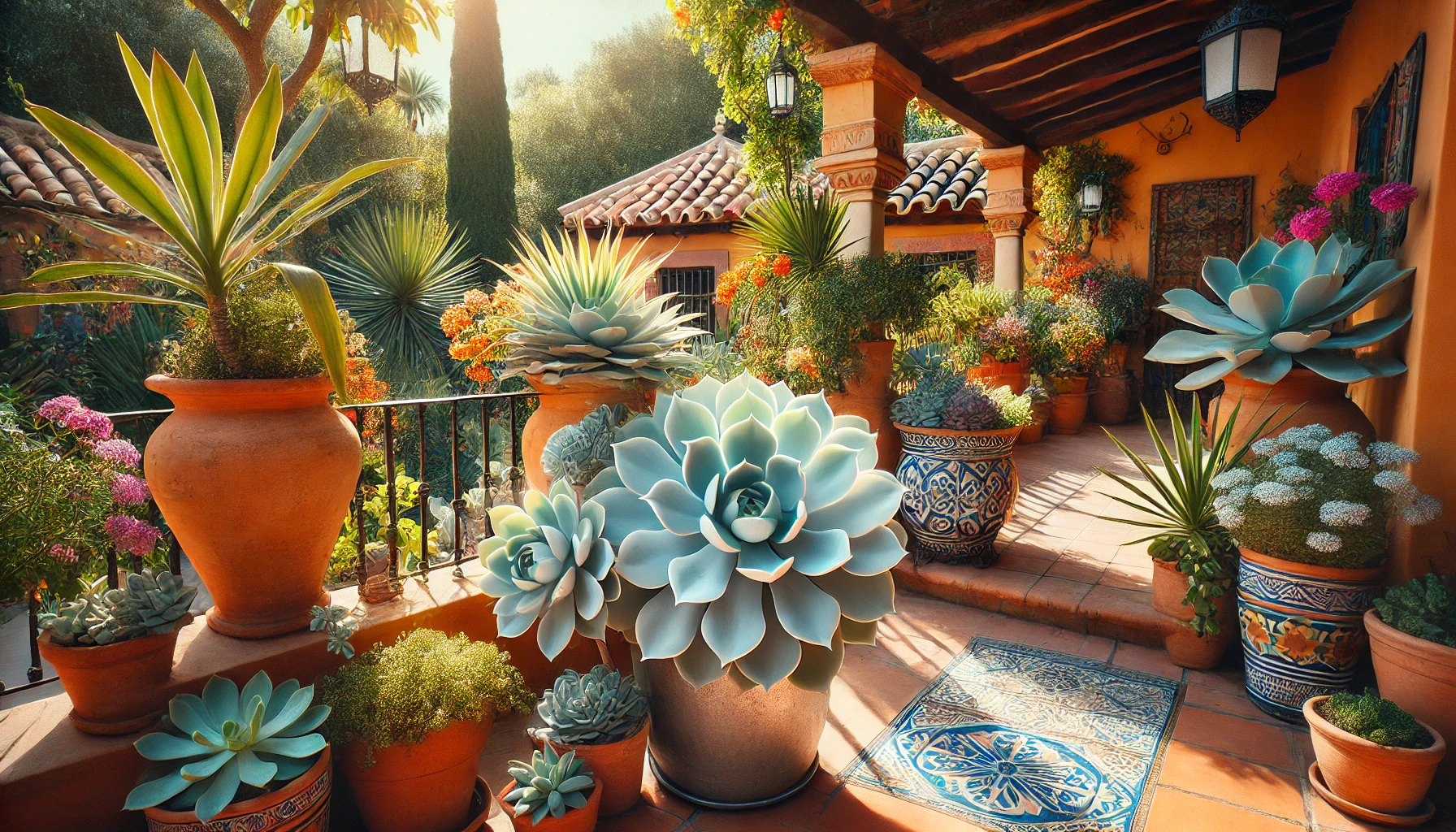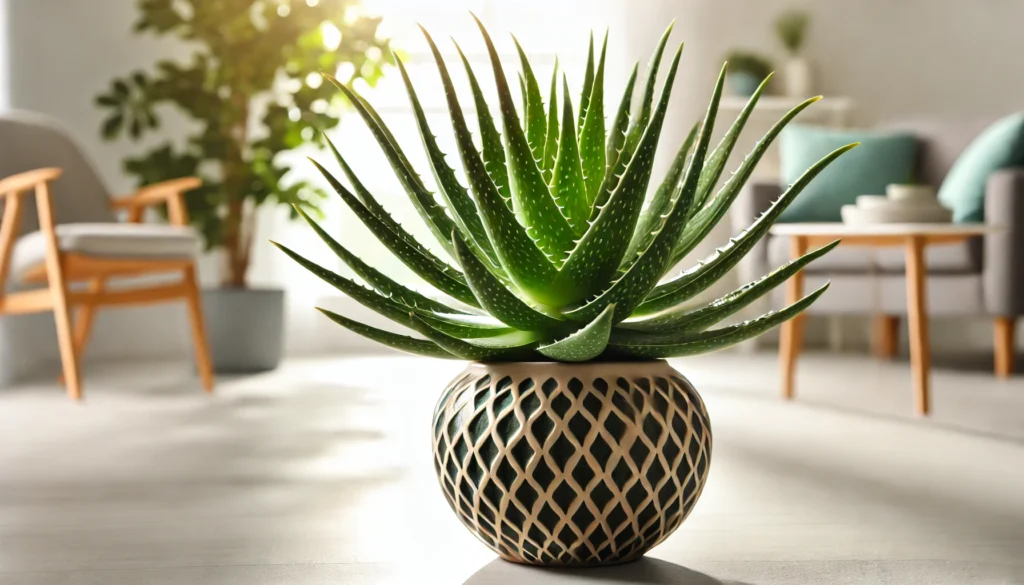
The Ghost Plant (Graptopetalum paraguayense) is a captivating and resilient succulent known for its unique, rosette-shaped leaves that vary in color from pale blue to lavender-gray. This perennial plant is a favorite among succulent enthusiasts due to its distinctive appearance and easy care. Ghost Plants typically grow up to 12 inches (30 cm) in height and can spread up to 24 inches (60 cm) wide, making them ideal for ground cover, container gardens, or as a striking accent in rock gardens.
History and Ideal Growing Conditions
Native to Tamaulipas, Mexico, the Ghost Plant thrives in arid, rocky environments. It was introduced to succulent lovers around the world in the early 20th century, quickly gaining popularity for its beauty and toughness. The Ghost Plant prefers well-draining soil and full sun but can also tolerate partial shade. It’s best suited for USDA Hardiness Zones 9-11, where temperatures are warm and frost is uncommon. However, it can also be grown indoors in cooler climates if provided with ample light and warmth.
Is the Ghost Plant Toxic to Pets?
Fortunately, the Ghost Plant is non-toxic to both cats and dogs, making it a safe choice for households with pets. You can enjoy this plant’s beauty without worrying about the safety of your furry friends.
Safe Alternatives for Pet Owners
Since the Ghost Plant is already safe for pets, there’s no need to seek alternatives. However, if you’re looking to expand your pet-safe succulent collection, consider adding the Haworthia (Haworthia spp.) or Echeveria (Echeveria spp.), both of which are non-toxic and offer a variety of beautiful shapes and colors.
Best Practices for Caring for Your Ghost Plant
Caring for a Ghost Plant is simple, especially when following a few best practices to ensure it thrives in your home or garden.
Watering and Humidity
Ghost Plants are drought-tolerant succulents that prefer a “less is more” approach to watering. Water thoroughly when the soil is completely dry, then allow it to dry out again before the next watering. Overwatering can lead to root rot, one of the few issues that can affect this hardy plant. Ghost Plants do not require high humidity and are well-suited to dry environments, making them ideal for both indoor and outdoor settings.
Soil, Light, and Temperature
The Ghost Plant thrives in well-draining soil, such as a cactus or succulent mix, which prevents water from pooling around the roots. This plant loves full sun, which enhances its vibrant colors, but it can also tolerate partial shade. Ideally, temperatures should be between 65°F and 75°F (18°C to 24°C), though the Ghost Plant can handle cooler temperatures down to 20°F (-6°C) if the soil is dry. If growing indoors, place the plant in the sunniest spot available, such as a south-facing window.
Common Problems and Remedies
The Ghost Plant is generally resistant to pests and diseases, but a few common issues can arise.
Overwatering is a primary concern, leading to root rot and mushy leaves. To remedy this, ensure the soil is well-draining and allow it to dry out completely between waterings. If you notice the leaves becoming soft or translucent, reduce watering immediately. Another issue is leggy growth, which occurs when the plant doesn’t receive enough sunlight. Moving the plant to a sunnier location will promote more compact, healthy growth.
Invasiveness
The Ghost Plant is not considered invasive, making it a safe choice for gardens without the worry of it spreading uncontrollably. It grows at a moderate rate and remains contained, especially when planted in containers. If you’re looking for non-invasive alternatives, consider similar succulents like the Sedum (Sedum spp.) or Stonecrop (Hylotelephium spp.), both of which are also non-invasive and make excellent companions to the Ghost Plant.
Propagation and Benefits of the Ghost Plant
Ghost Plants are incredibly easy to propagate, making them a favorite for gardeners who enjoy sharing plants. Propagation can be done by leaf cuttings or by separating offsets from the mother plant. Simply remove a healthy leaf, allow it to callous over for a few days, and then place it on well-draining soil. Within a few weeks, new roots and a tiny rosette will begin to form.
Beyond its beauty, the Ghost Plant offers the benefit of low maintenance and drought tolerance, making it ideal for xeriscaping or areas with water restrictions. Its unique appearance also makes it a focal point in succulent arrangements or as a standalone piece in a decorative container.
Final Thoughts
The Ghost Plant is a resilient and visually stunning succulent that adds a touch of elegance to any garden or indoor space. With its ease of care and non-toxic nature, it’s a plant that can be enjoyed by everyone, including pet owners. Whether you’re new to gardening or an experienced succulent enthusiast, the Ghost Plant is sure to bring joy and beauty to your collection. With proper care, it will thrive and continue to impress with its ghostly, captivating appearance.



